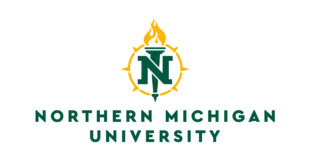The Copper Country community met with the EPA, EGLE, and Honeywell International to learn more about a pilot study starting soon on Torch Lake. The lake was designated an area of concern under the 1987 Great Lakes Water Quality Agreement. In 2019 the EPA signed an agreement with Honeywell International to begin studying how to remove barrels with mine waste or find a way to remedy those sites.
We completed a focus feasibility study in the Lake Linden Recreation Area last year, and it selected a remedial alternative of dredging. So we’ll be going to the area where there’s been a lot of environmental sampling done in areas with elevated levels of contaminants. Will essentially be dug out and removed and the area will be backfilled with clean material. – Jessica Telano, Remediation Manager, Honeywell International
The EPA and Honeywell will begin work on a pilot study to better understand the factors involved with removing barrels at various depths. This fall contractors will work near the Hubbell Processing Area.
So we have an area at the Hubble Processing Area where we have contaminated sediment, but there are also about 400 drums at the bottom of the lake. So this pilot study is looking at how we can effectively remove these drums in different water depths because we have drums from 20 feet to about 80 feet of water. So they’ll spend four days, our EPA contractors, will spend four days in each of these three areas and do a lot of monitoring to understand how effectively we can remove drums at these various water depths. So that’s why we’re here today, to let people know that there’s going to be trucks, there’s going to be equipment, there’ll be barges and cranes on the lake in late September and early October. So just letting them know what this work involves and the results of this study are going to help us plan a larger cleanup. – Heather Williams, Contaminated Sediments Project Manager, EPA Great Lakes National Program Office
To help with the project EGLE had to find a way to work on a separate stage of Torch Lake’s larger remediation. By working to study Beneficial Use Impairments and the degradation of benthos in the water EGLE could also get involved with Torch Lake. One solution has included planting native plants along the shore to encourage insect and wildlife restoration.
So one of the impacts was the degradation of benthos. And degradation of benthos, so the state has criteria that we evaluate that from, and those criteria say, we can say the impairment has been fixed if we remove contaminated sediment. So there’s your linkage to the EPA and the Honeywell Project. Now sometimes the state of Michigan will come in also act as a sponsor for those projects, but the state has no more money to come in as a sponsor. So ideally we would have money, and we used to through the Clean Michigan Initiative and now we don’t have a lot of money, and we used to use that as a match. However, we are a partner in the sense that we are all working towards the benefit of this area of concern. The Benthos project was a way for us to say, Let’s not just think about contaminated sediments, let’s think about some other enhancements that we can do that will increase the benthic population in the lake. – Stephanie Swart, Great Lakes Coordination – Lake Superior, Michigan Department of Environment Great Lakes and Energy
In September contractors will begin to place equipment near the Hubbell Processing Area. Crews will use barges, a crane, construction equipment, and small vessels to remove contaminated sediments and barrels. Those interested in learning more about the Torch Lake project within the Great Lakes Areas of Concern with the EPA EGLE and Honeywell International can find more details here.
 Keweenaw Report Your Source for Local News and Sports
Keweenaw Report Your Source for Local News and Sports






